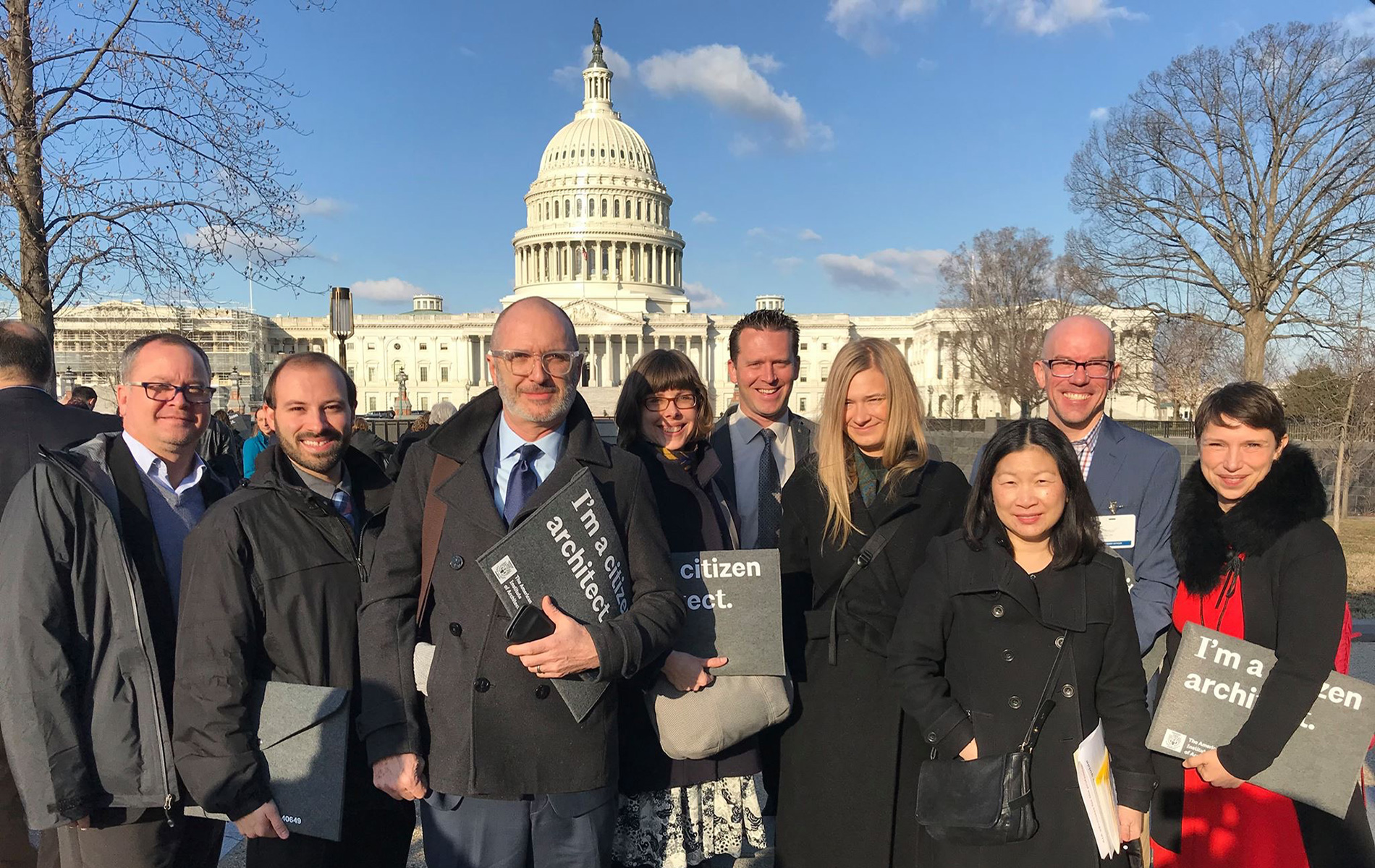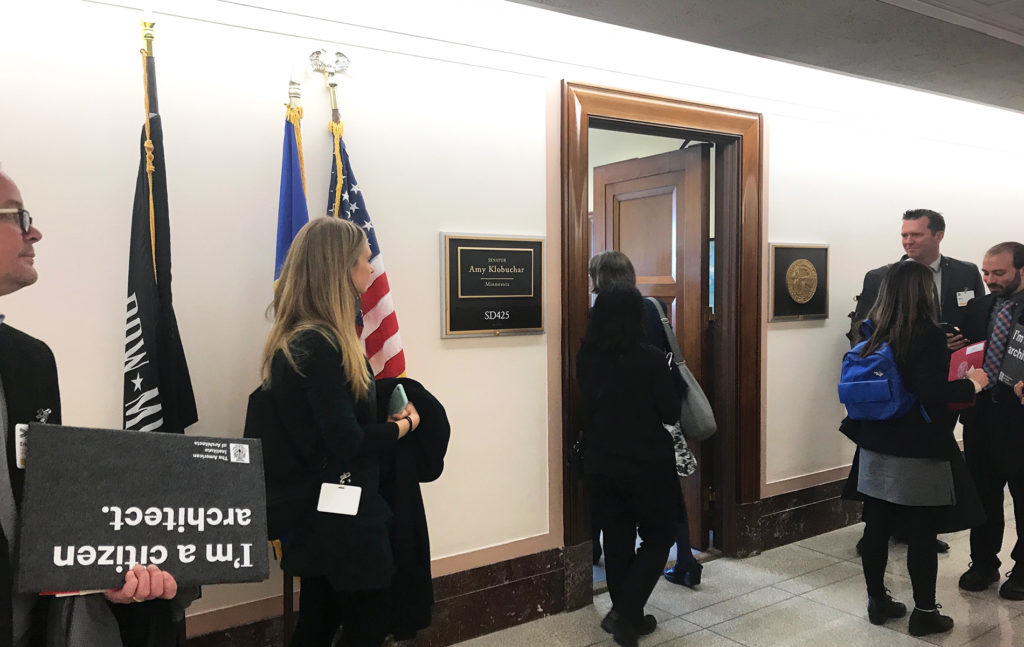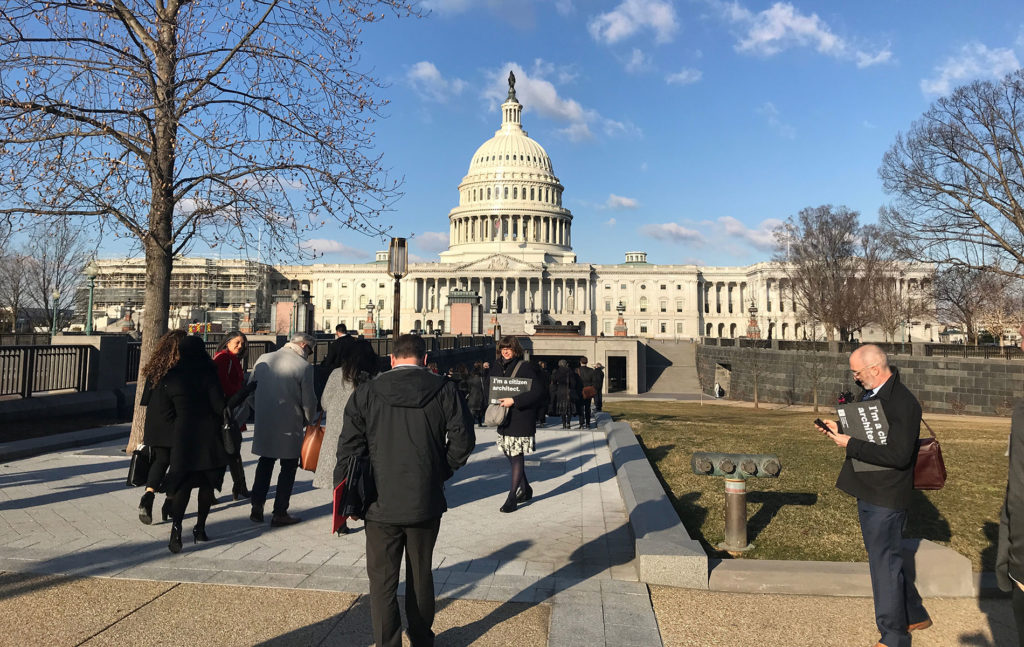#citizenarchitects, Civic Responsibility, and Lobbying for Change in our Nation’s Capital
#citizenarchitects, Civic Responsibility, and Lobbying for Change in our Nation’s Capital

In early March, I joined a contingent representing Minnesota’s architects and traveled to our nation’s capital to advocate for two critical issues: school safety and energy efficiency. Our advocacy, which was part of AIA’s annual Grassroots conference, brought us face-to-face with staff from the offices of Senators Klobuchar and Smith, as well as staff from Reps. Hagedorn, Omar, McCollum, Stauber, and Phillips.
School Safety
Since 9/11, a core piece of the government’s response to terror threats has been rethinking how we design public buildings. However, in the 20 years since the Columbine shootings, over 220,000 students have experienced gun violence, and yet a similar strategy to implement design-based solutions has not emerged.
Responses to shootings often include calls for more security technology (i.e., metal detectors), arming teachers, or getting rid of windows. School officials make decisions without a lot of credible information, in a politically charged and emotionally wrought environment. To help combat this, the AIA is proposing a federally-funded and curated clearinghouse of design best practices that would be available to state and local officials. This could provide reliable information about holistic design approaches to preventing shootings, supporting mental health and strengthening community connectivity. Additionally, funding related to school safety would include architectural services as qualified expenses.

Energy Efficiency Improvements
Buildings produce nearly 40 percent of greenhouse gasses. One of the key ways the federal government has tried to address this is through tax incentives. Under Section 179D of the tax code, owners get a tax deduction for building more efficiently than the energy code. This worked well for new buildings, but 82 percent of buildings were constructed before 2000. Congress is currently rewriting a provision that will provide tax deductions for defined interior improvements to nonresidential buildings. The AIA is also asking that energy efficiency technology be added as qualified improvements, to stimulate reinvestment in existing buildings and to make them more efficient.
#citizenarchitect
Architects have an ethical obligation to be involved in civic activities as both citizens and professionals. As such, I would encourage anybody and everybody to get involved by contacting their state and federal representatives. Phone calls can have an outsized contact, and they’re easy — you’ll likely talk to an idealistic college intern who will jot down some notes about what you think to give your representative. There are also many “day at the capitol” events sponsored by various organizations that provided an opportunity to meet reps or staff in person. It’s genuinely fun to see the assortment of groups making their voices heard, and restorative to see democracy in action.

We often perceive “lobbying” as something that is solely the purview of shadowy, big-money lawyers. And, in these turbulent political times, it can be tempting to throw one’s hands up and give up on the whole government mess. Cynicism is easy. Engagement and advocacy can be slow, frustrating, and hard. But the stakes are enormous, and to quote Paul Wellstone:
The future will not belong to the cynics.
